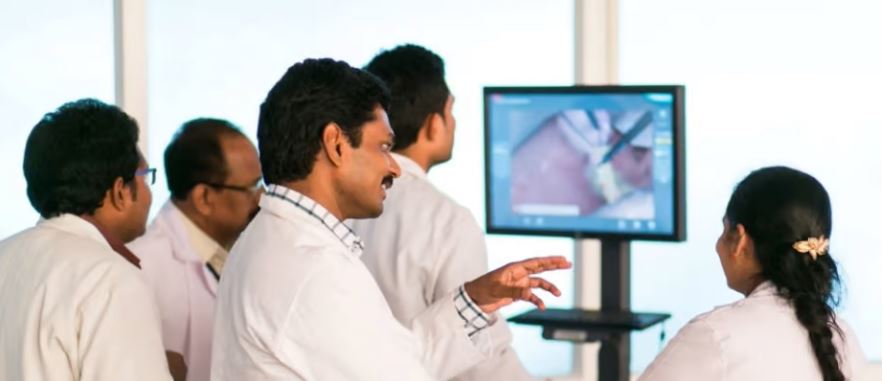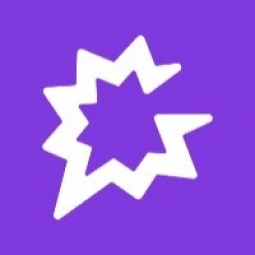Applicable Industries
- Apparel
- Education
Applicable Functions
- Procurement
- Sales & Marketing
Use Cases
- Time Sensitive Networking
Services
- Training
About The Customer
Culture Amp is a Melbourne-based company founded in 2011. It is an employee experience platform that works to transform organizational culture. The company has over 800 employees and operates in the software development industry. Simon Kirk, the VP of Revenue Enablement at Culture Amp, has seen firsthand how a tool like Gong can become part of the fabric of an organization’s identity. Culture Amp values learning faster through feedback and strives to stay ahead of evolving cultural trends. The company is committed to creating efficiencies and improving deal velocity to ensure successful growth and scalability.
The Challenge
Culture Amp, an employee experience platform, was facing challenges due to its continuous growth. The company was at risk of falling behind and encountering circumstances that could cause misalignment within their priorities and processes. As a company working in the cultural space, they needed to stay ahead of evolving trends, especially during the shift to remote work and the onset of the 'great resignation'. The company also faced difficulties in aligning departments towards common goals as it scaled. The larger the organization grew, the more disparate the tasks became, leading to disagreements about priorities. Another challenge was the need to improve deal velocity, a crucial part of company growth. Culture Amp noticed that not all sales calls ended with clear next steps, slowing down their processes.
The Solution
Culture Amp turned to Gong, a tool that became part of the fabric of the organization’s identity. Gong’s recordings and coaching features helped Culture Amp understand the voice of the customer and create strategies based on that knowledge. Gong’s real-time feedback helped Culture Amp coach their teams to adjust their approach to meet the market where it is. Gong also helped in aligning departments to work together towards common goals. The ability to search calls by keyword or deal status made it easier to quickly establish the truth of what’s happening, allowing everyone to focus on solving pressing issues. Gong also helped Culture Amp improve deal velocity. By diving into the crucial part of each call, they were able to determine how prevalent the issue was and develop a corrective program to retrain reps. Gong analytics were used to see if the program was effective. Gong also helped in creating efficiencies through coaching, a crucial part of their sales team’s success.
Operational Impact

Case Study missing?
Start adding your own!
Register with your work email and create a new case study profile for your business.
Related Case Studies.

Case Study
Fire Alarm System and Remote Monitoring Sytem
Fire alarm systems are essential in providing an early warning in the event of fire. They help to save lives and protect property whilst also fulfilling the needs of insurance companies and government departments.Fire alarm systems typically consist of several inter-linked components, such as smoke detectors, heat detector, carbon monoxide, manual call points, sounders, alarm and buzzer. The fire alarm system should give immediate information in order to prevent the fire spread and protect live and property.To get maximum protection a shoe manufacturer in Indonesia opted for a new fire alarm system to monitor 13 production sites spread over 160 hectars. Although the company had an existing fire alarm system, it could not be monitored remotely.It was essential that the new system would be able to be monitored from a central control room. It needed to be able to connect to the existing smoke detector and manual call point. Information should be easily collected and passed on to the Supervisory Control and Data Acquisition (SCADA) system. Furthermore, the system should have several features such as alarm management, auto reporting, being connected to many client computers without additional cost, and run 24/7 without fails. The company also needed a system which could be implemented without changing the architecture of the existing fire alarm system.

Case Study
IoT Applications and Upgrades in Textile Plant
At any given time, the textile company’s manufacturing facility has up to 2,000 textile carts in use. These carts are pushed from room to room, carrying materials or semi-finished products. Previously, a paper with a hand-written description was attached to each cart. This traditional method of processing made product tracking extremely difficult. Additionally, making sure that every cart of materials or semi-finished products went to its correct processing work station was also a problem. Therefore, the company desired an intelligent solution for tracking assets at their factories. They also wanted a solution that would help them collect process data so they could improve their manufacturing efficiency.

Case Study
Retailer Uses RFID Scanner to Improve Efficiency
Patrizia Pepe wished to improve the logistics of their warehouse: accepting incoming goods from their production sites, movement of items throughout
the warehouse, and packaging of goods for distribution to the retail locations. They initially tried to use barcodes for this function. Because barcodes must be individually scanned within a line-of-sight, the acceptance of goods coming into the warehouse was too time consuming. Working with the University of Florence, Patrizia Pepe instituted a five-month pilot project beginning in August of 2009 to test the validity of an RFID solution. The pilot involved tagging of about 60,000 items for the second seasonal collection, and convinced the company to move forward with tagging all items.

Case Study
Monitoring and Controlling Automatic Mixing and Dispensing Machines
As technology advances, textile manufacturing has been transformed from a labor-intensive to a partially or fully automated industry. Automation is significant in all segments of textile production - from spinning to printing, and textile machinery manufacturers are constantly searching for new technologies and automation processes will increase the productivity of their machines. The color paste mixing and dispensing machine is an essential part of the printing and dyeing process. With the advantage of automatically computerized controls and database management, the system can significantly improve its dispensing precision, working efficiency and production quality as well as reducing material consumption.

Case Study
Revolutionizing Medical Training in India: GSL Smart Lab and the LAP Mentor
The GSL SMART Lab, a collective effort of the GSL College of Medicine and the GSL College of Nursing and Health Science, was facing a challenge in providing superior training to healthcare professionals. As clinical medicine was becoming more focused on patient safety and quality of care, the need for medical simulation to bridge the educational gap between the classroom and the clinical environment was becoming increasingly apparent. Dr. Sandeep Ganni, the director of the GSL SMART Lab, envisioned a world-class surgical and medical training center where physicians and healthcare professionals could learn skills through simulation training. He was looking for different simulators for different specialties to provide both basic and advanced simulation training. For laparoscopic surgery, he was interested in a high fidelity simulator that could provide basic surgical and suturing skills training for international accreditation as well as specific hands-on training in complex laparoscopic procedures for practicing physicians in India.








